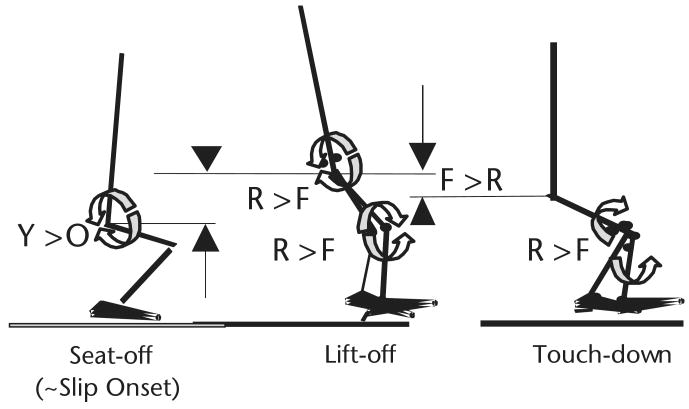Figure 3.
During preparation for chair-rise from movement initiation to losing contact with chair (seat-off) when a slip was unexpectedly induced (∼slip onset), 22 older adults (O) did less net concentric (positive) work, on average, than that generated by the hip extensors (2 half circles: counterclockwise-clockwise) of 43 young adults (Y). This age-related difference (Y>O) caused less increase in upward momentum and in potential energy required for ascending (upward arrow and triangle) and might have predisposed a greater proportion of older adults to falls. All of them took a step for recovery, but from seat-off to step lift-off, fallers (F) did less concentric work generated by the hip extensors (counterclockwise-clockwise circles) and knee extensors (clockwise-counterclockwise circles) than those who recovered (R) (R>F). From step lift-off to touch-down, fallers' knee extensors (clockwise-counterclockwise circles) failed to resist gravitational effect, resulting in more negative (eccentric) work than in those who recovered (R>F), causing knee buckling. Although those who fell and those who recovered both experienced unintended hip descent (limb collapse), hip height for those who fell was significantly lower than that for those who recovered at the step touch-down (downward arrow and triangle for descent, F>R). This mechanism of fall applied to all fallers regardless of their age.41

